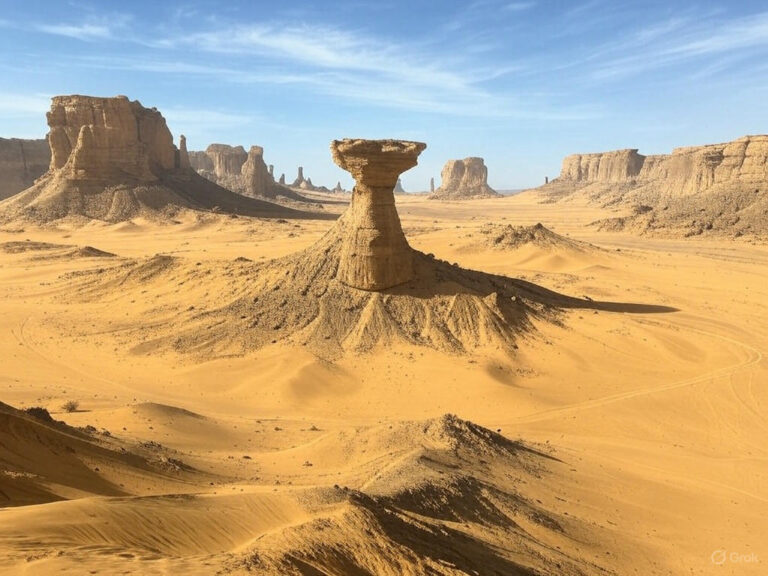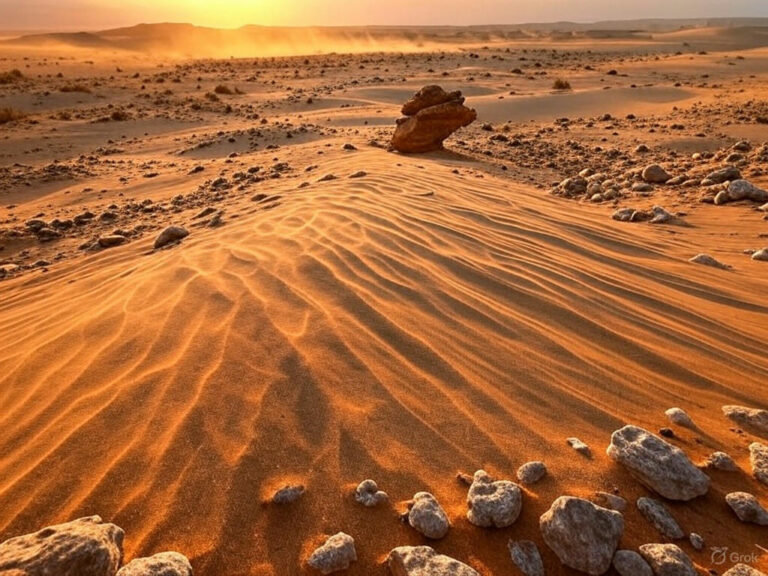Formation of Rift Valleys- Hypotheses and Theories
Imagine the Earth as a giant loaf of bread, fresh out of the oven. Now, if you gently pull it apart from both sides, a deep gap forms in the middle. This is exactly how rift valleys are created—massive trough-like depressions formed due to faulting activities when parts of the Earth’s crust move apart or sink due to tectonic forces.
But this isn’t just theory—rift valleys are real, visible scars on our planet, stretching for thousands of kilometres. The Great Rift Valley in Africa is so vast that it can be seen from space! Now, let’s embark on a journey to understand how these incredible landforms come into existence.
The Making of a Rift Valley
The Earth’s surface is not solid and unbreakable; instead, it’s like a giant jigsaw puzzle made up of tectonic plates. These plates are constantly moving, and when they pull apart, they create cracks, fractures, and faults. If this movement is strong enough, an entire block of land can sink between two faults, forming what we call a rift valley.
There are two main ways in which a rift valley forms:
1️⃣ The land in the middle sinks: The crust stretches, creating two normal faults. The central portion drops downward, forming a long, narrow valley.
2️⃣ The land on the sides rises: Instead of the middle sinking, the land on either side is pushed upward, making the central portion appear lower.
Either way, the result is the same—a deep, narrow, and elongated valley with steep walls.
📍 Example: The Rhine Rift Valley in Europe, bordered by the Vosges and Harz Mountains on one side and the Black Forest and Odenwald Mountains on the other, is a perfectly shaped rift valley.
How Did These Valleys Form? Hypotheses and Theories
Scientists have tried to understand how these valleys form. Over time, three main explanations have emerged:
1️⃣ The Tensional Hypothesis (Keystone Hypothesis)
Imagine an arch-shaped bridge made of stones. If you remove the central keystone, the entire arch collapses.
Similarly, the Earth’s crust is stressed by tensional forces, forming parallel cracks. The land between these cracks sinks, just like the missing keystone in an arch. This process leaves behind an enormous depression—a rift valley.
🧐 Key Idea: The Earth is pulled apart, creating a sinking valley in the middle.
📍 Example: The Great Rift Valley in Africa, where the African plate is splitting into two, forming a massive depression that may one day become a new ocean.
2️⃣ The Compressional Hypothesis
This explanation suggests that rift valleys can also be created by compression instead of tension.
Think of a rug on the floor—if you push both ends toward the middle, it folds upward. Now imagine that instead of folding, the middle part collapses under pressure—this is how a rift valley forms in the compressional hypothesis.
- As tectonic forces push the Earth’s crust together, the side blocks are thrust upward, while the middle block sinks under pressure.
- The result is a deep, elongated valley called a rift block.
🧐 Key Idea: The side blocks rise, forcing the middle part downward.
📍 Example: The Rhine Rift Valley was formed through a combination of compression and tension over millions of years.
3️⃣ E.C. Bullard’s Multi-Stage Theory
E.C. Bullard had a different idea—rift valleys don’t form all at once; they take time.
🔹 Stage 1: Compression builds up in the crust rock beds of the rigid part of the plateau due to active horizontal movement. This lateral compression causes buckling of the crustal rocks. When the compressive force becomes so acute that it exceeds the strength of the rocks, a crack is developed at a place A in the rock.
🔹 Stage 2: Due to formation of a crack at A, one portion overrides the other portion. This process is called as thrusting. Due to up-thrusting of the side blocks A-C upto a height of a few thousand meters the downthrust block A- D develops crack at B due to resultant compressive force.
🔹 Stage 3: the crack developed at B gets enlarged due to increased compression with the result B-D part of the downthrust block overrides its other part (A-B) the position of downthrust A-B part between the two upthrust blocks becomes a rift valley.
🧐 Key Idea: Rift valleys form in multiple phases—first, the rocks bend, then they crack, and finally, the valley deepens over time.
📍 Example: Many rift valleys, including parts of the East African Rift System, show evidence of multiple phases of formation.

The Future of Rift Valleys – A Glimpse into Tomorrow
Rift valleys are not static—they continue to grow, widen, and deepen over time.
🌊 In millions of years, the Great Rift Valley in Africa may flood with water and form a new ocean, splitting the African continent in two.
🌍 The Red Sea was once a rift valley that eventually widened and filled with water, forming the sea we see today.
The process of rift valley formation is a sign that the Earth is alive and constantly evolving.




